Two’s Company
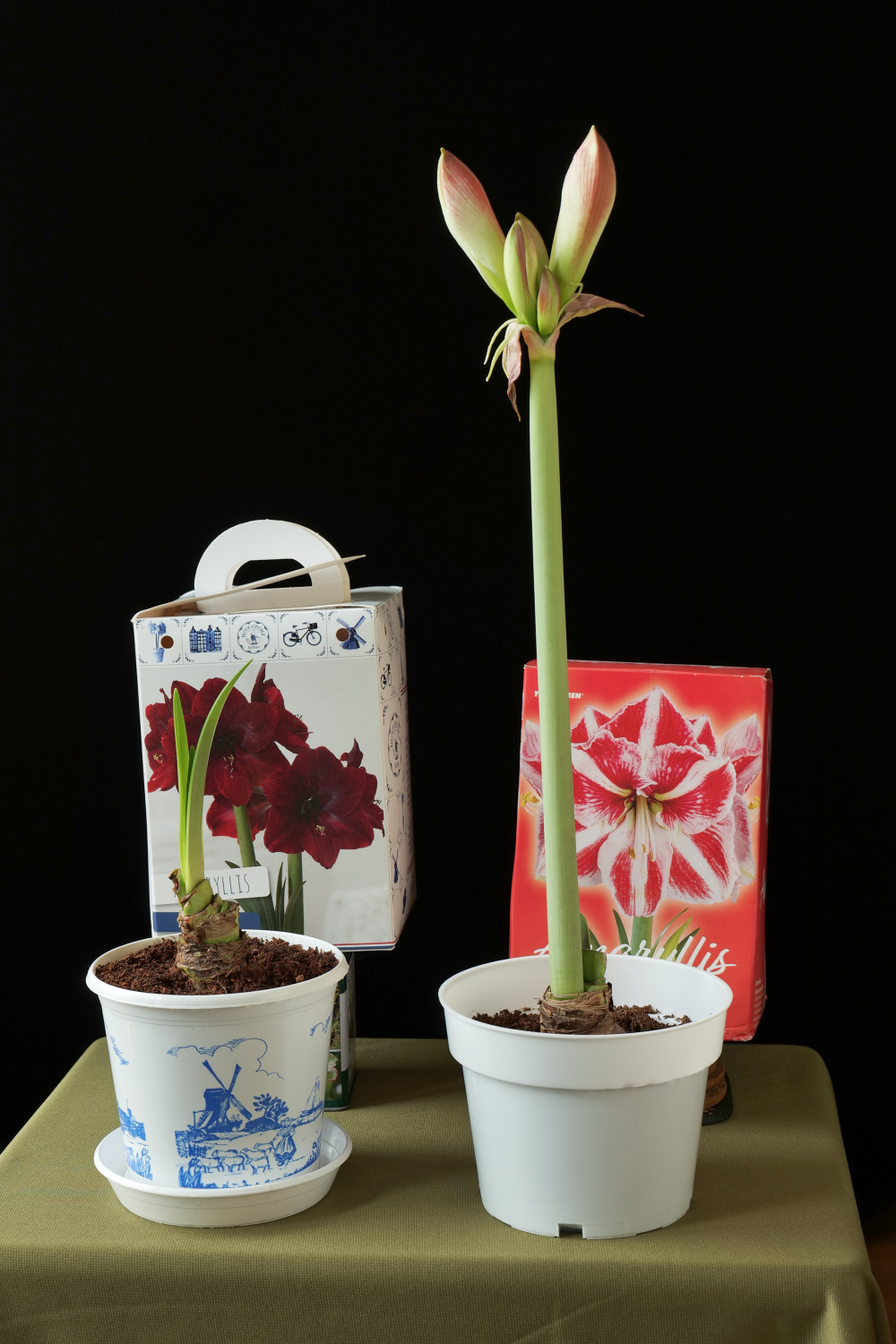
In the lead up to the winter holidays, much was swirling about in Emaryllisland, and the chances of finding time to devote to this website, much less a box kit feature (a fixture since 2008) seemed rather dim. No matter what is going on in life, one must still visit the grocer for basic provisions. Flower departments in food stores are big business, and though I’ve yet to encounter cut amaryllis flowers for sale, potted bulbs and box kits are routine. So there we were, a few days before Thanksgiving when a display of bulb kits on and end cap catches the eye of Emaryllis. Well, that wasn’t so difficult. Surely one kit wouldn’t be too much to handle, and one of them looked mysterious upon a glance at the floral image on the box. At $8 U.S. the mystery box goes into the shopping cart.
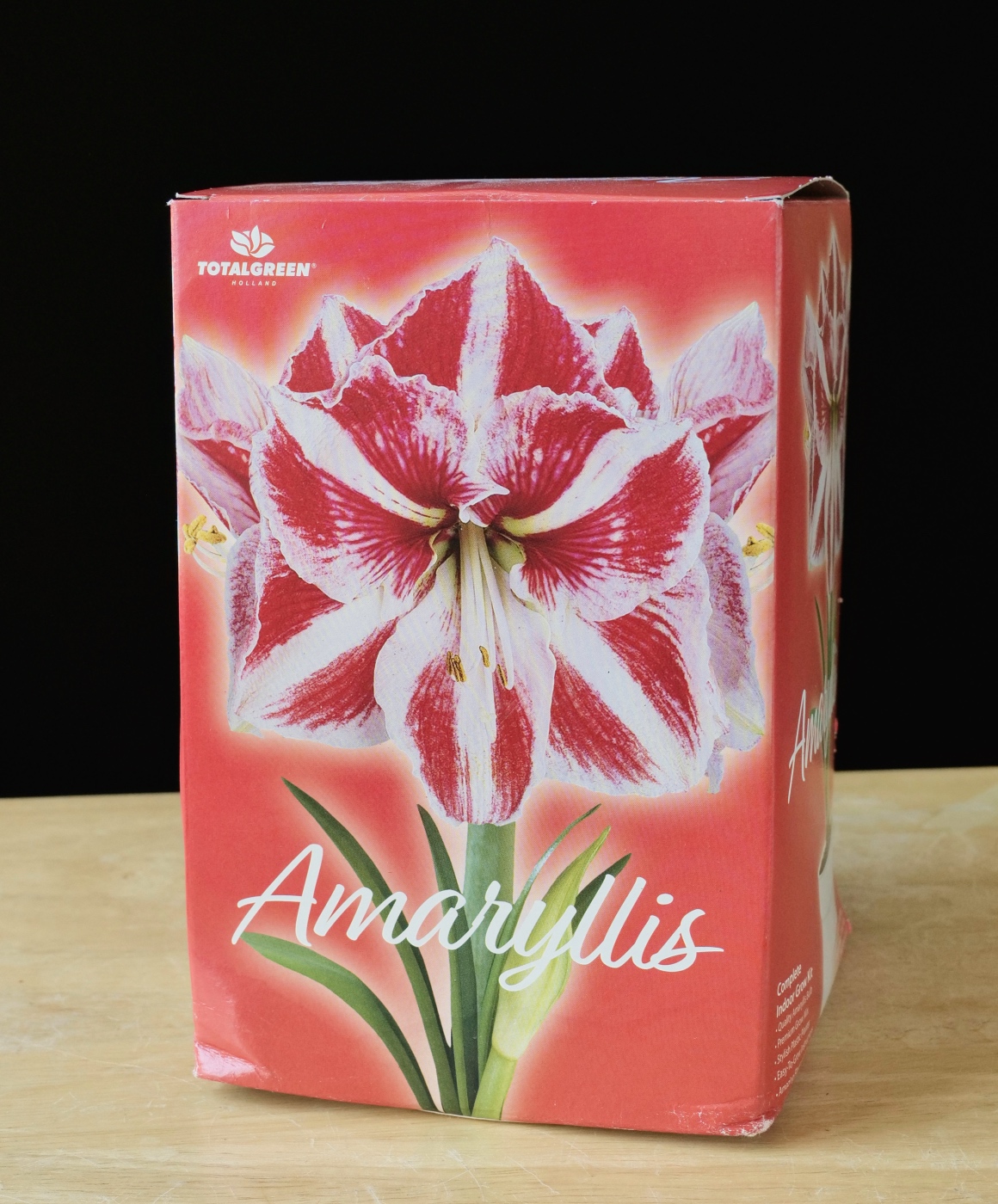
First, the image on the box shows a big and bold bicolor resembling the likes of ‘Clown’ or even ‘Popov’. But in reading the fine print on the bottom of the box, the origin of the bulb states “grown in Israel” which these days means Saad-Assaf, now trading as Amaryllis IL. While I don’t have instant recall of all that they grow, none of their own bicolors I can think of resemble the box image, and while they do grow ‘Minerva’, this photo clearly shows something completely different from that ever popular classic.
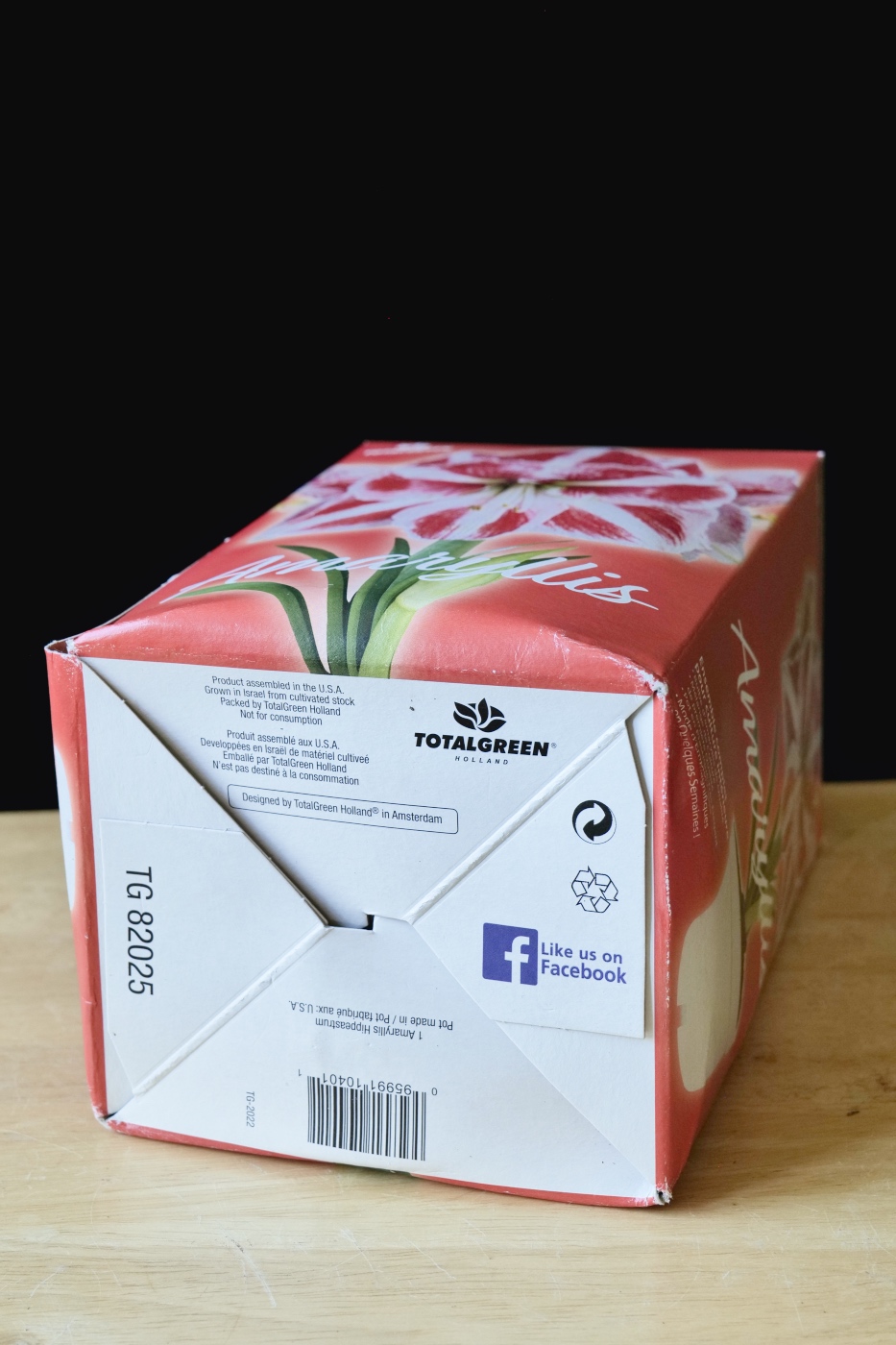
In my mind, I am betting that since the Israeli firm produces ‘Opal Star’ in great quantity, and of course ‘Minerva’ for its predictability in forcing, that it will be one of the two. ‘Glee’ would be a most pleasant surprise, so I rule that out 😉
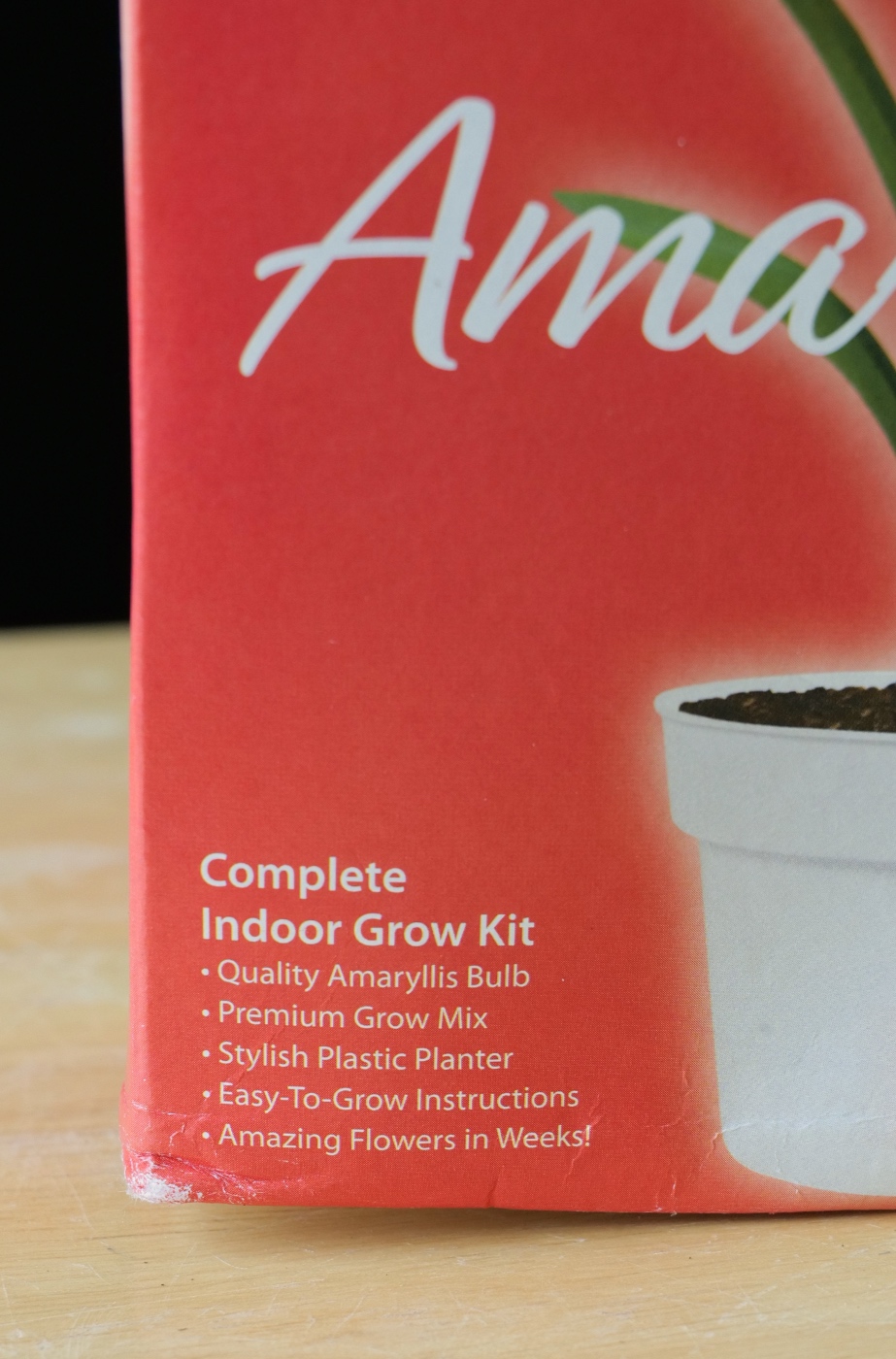
One other seemingly bold claim on the box is that it comes with a “Stylish Plastic Planter”. It must be something other than the plain white nursery pot seen on the carton, right? Style is of course in the eye of the beholder, but some sort of fluting, embossing, decorative print, curvy shape or other feature is what Emaryllis expects when “stylish” is trotted out as a claim. Most fancy amaryllis gifts with style are those pre-potted into a simple container that slips into a nice cachepot for display. Still, it is not unheard of to find some rather nice looking plastic pots in these kits. Let’s open ‘er up!
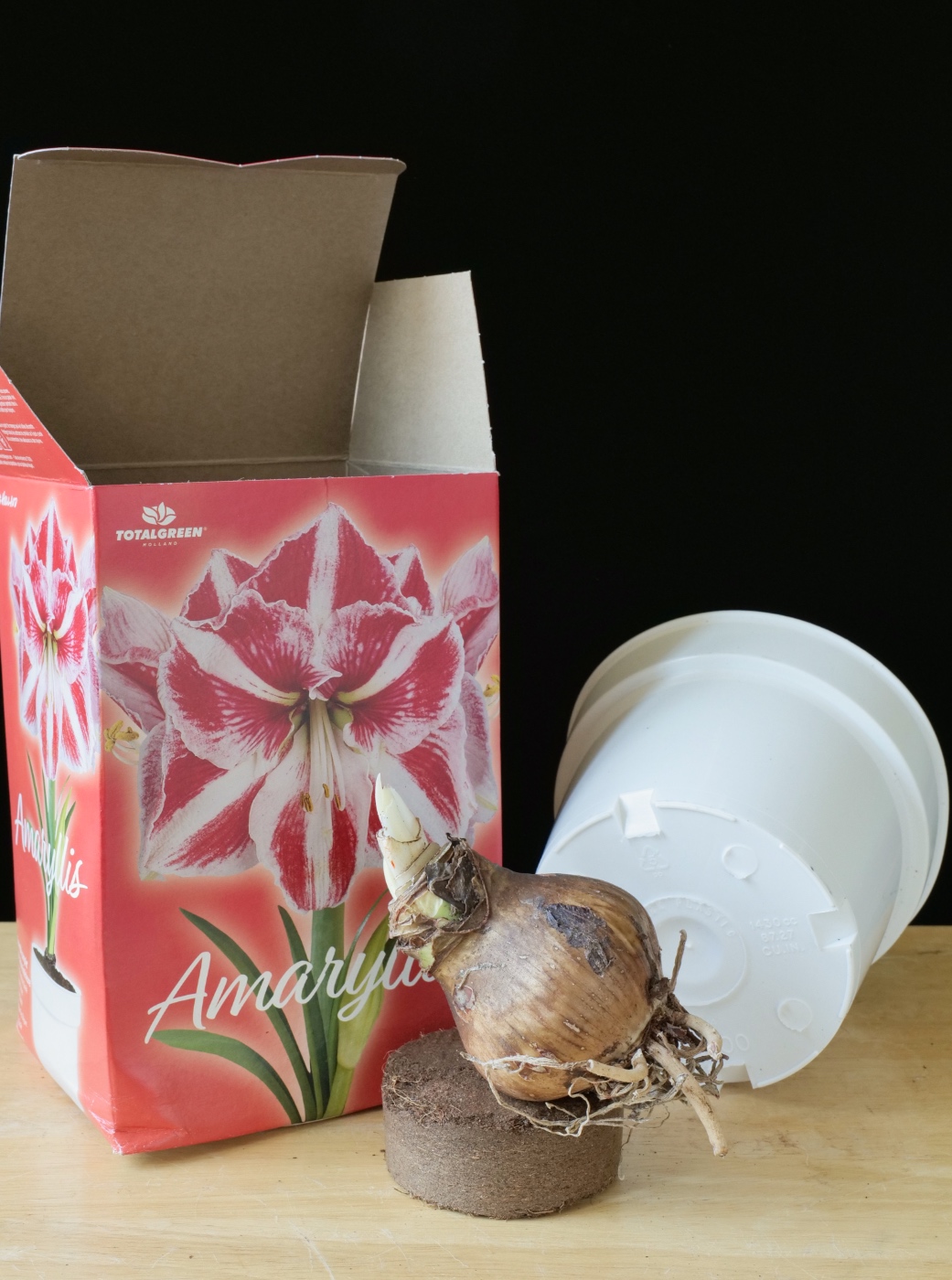
As you can see above, the kit is pretty bare-bones. The coir puck is unwrapped (fine with me to save on the overuse of plastic). The bulb is firm and has a few live roots, but the measurement is worrisome. Wrapping a tape measure around the widest part of the bulb yields a circumference of a mere 22.5 cm. That is pushing things, and does not bode well for the production of two scapes (as shown on the box). A 24/26 cm bulb should be the minimum standard for large flowering Hippeastrum hybrids. The pot. That “stylish” pot. Not only is it plain and thin material, its pre-marked areas for drainage holes are un-drilled. It is understood that a stylish cachepot will not be drained, but the growing pot must be for these bulbs. Amarylli need plenty of aeration for their thick roots, and sopping wet soil quickly leads to rot in most cases. This is an underwhelming kit so far. Will it produce surprisingly good results regardless, as we have sometimes seen?
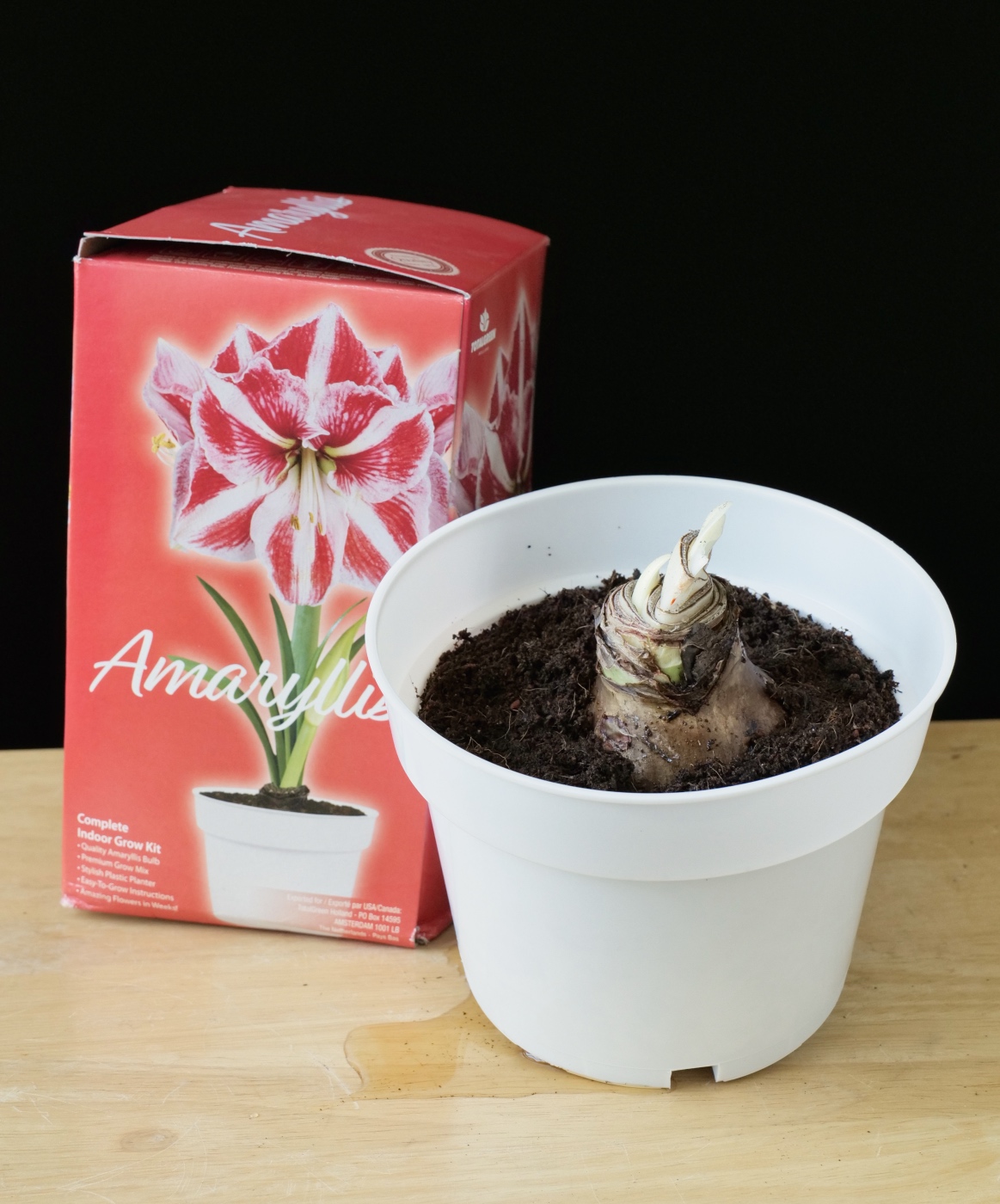
Once a kitchen knife was used to carve out some drainage holes (and one crack that serves the same purpose) we are ready to soak the coir in warm water. In this case it provides just barely enough media for the pot which is generously sized for the tiny bulb. Now, we wait.
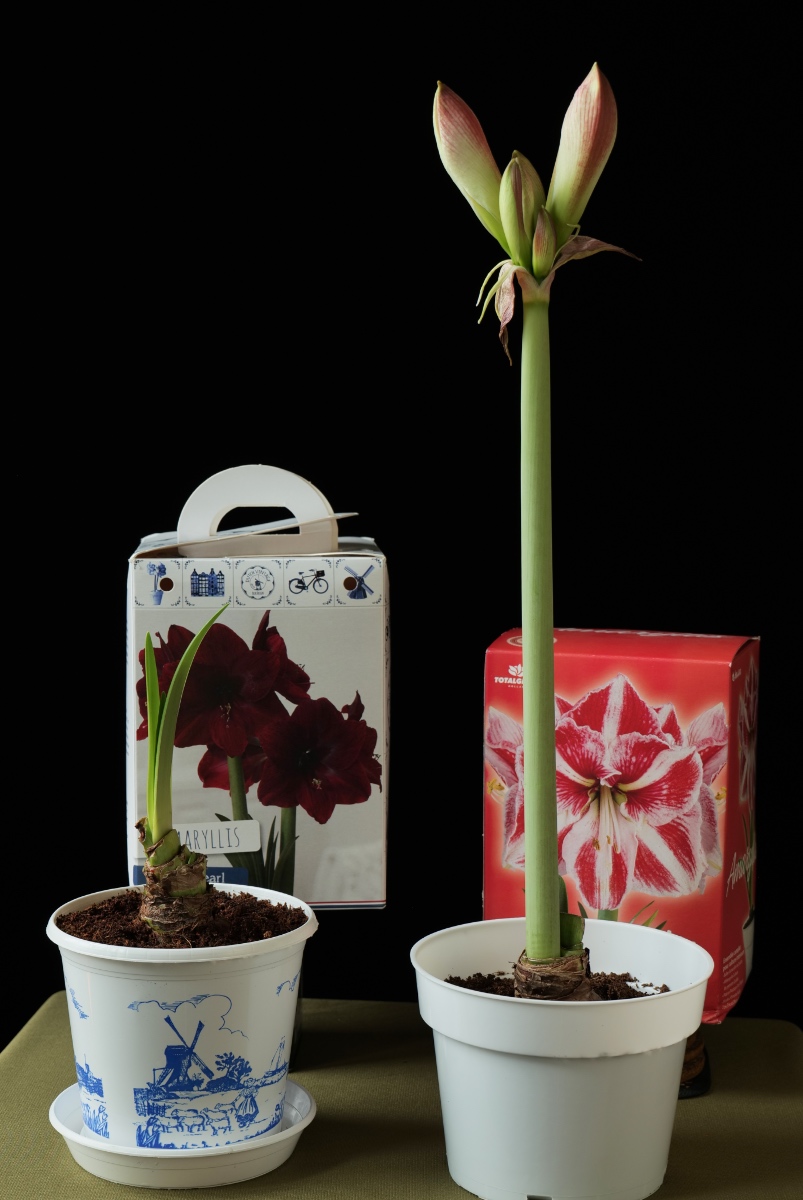
While our mystery bicolor kit was settling into it’s…ehem…”stylish” pot, it seemed only right to have another kit for comparison. A kit with the promise of a little more panache. Ordered just after Thanksgiving, this interesting kit arrived on December 1st.
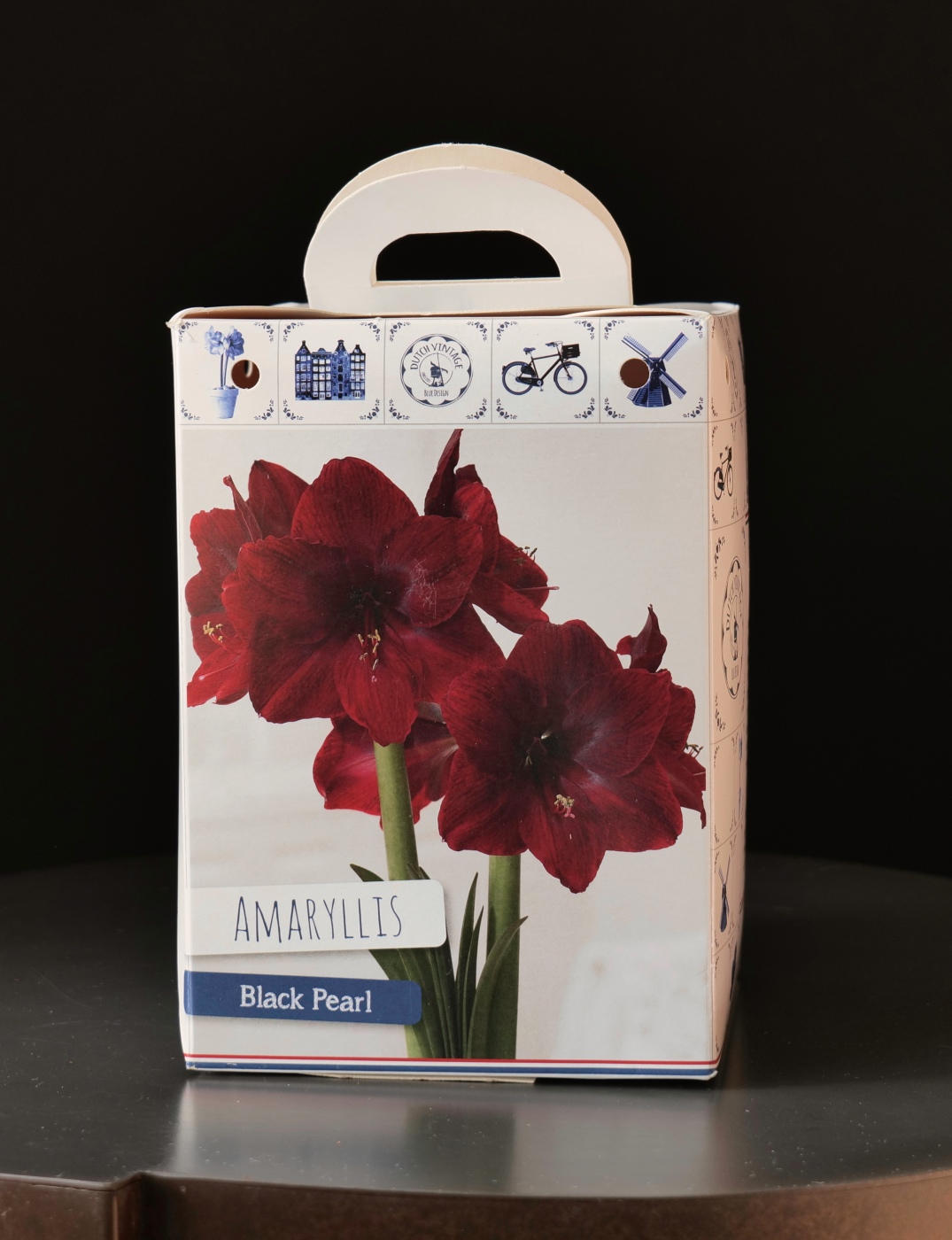
At a cost of $20, more than double the other kit, we can surely apply a higher standard here. The box itself is more stylish, and it oozes its own sort of mystery, a nomenclatural one. In this case the kit does have a cultivar name on it. The problem is, there isn’t a registered variety named ‘Black Pearl’; it is a generic name used to sell any number of currently produced very dark red hybrids. So the mystery here is, which will it be?
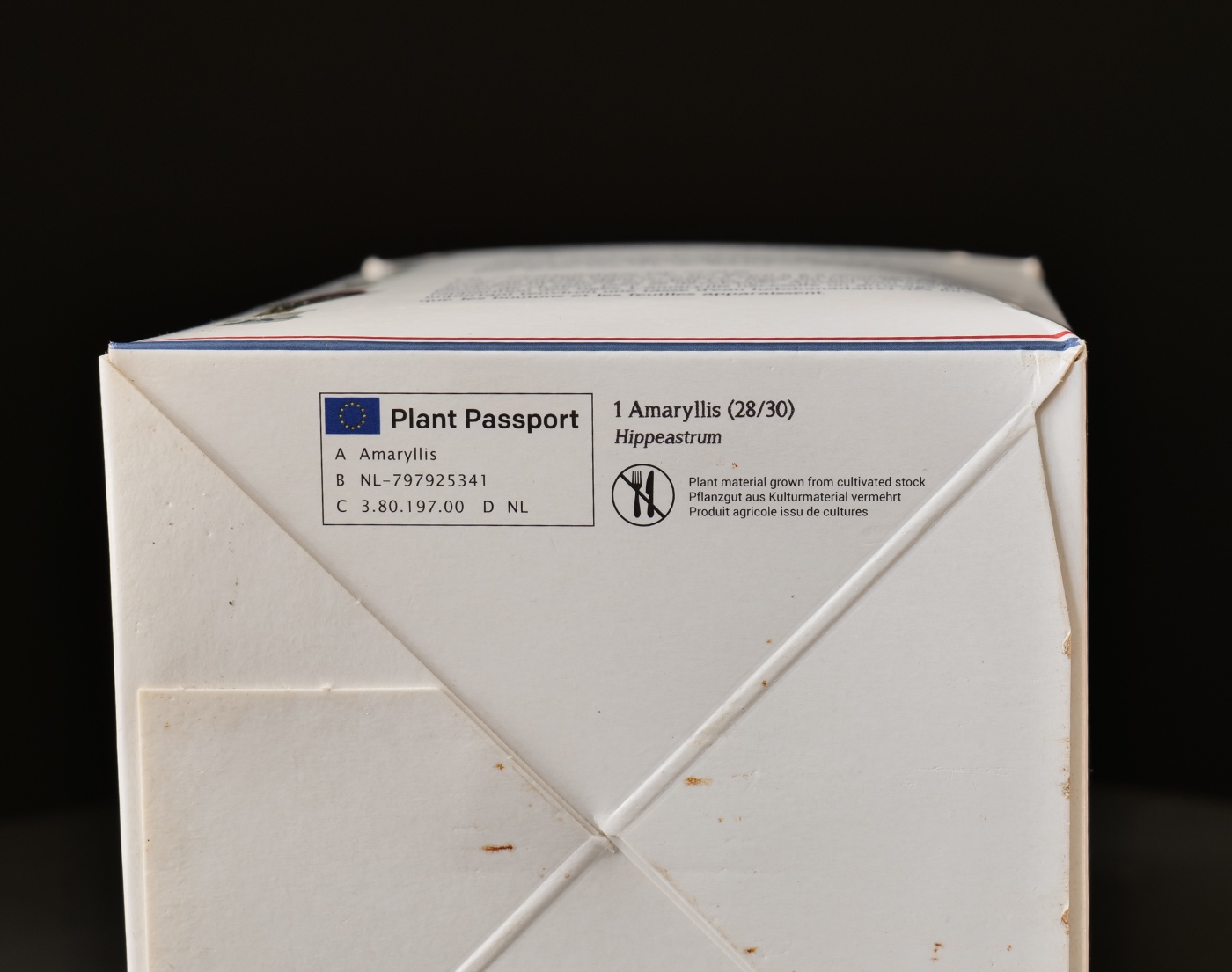
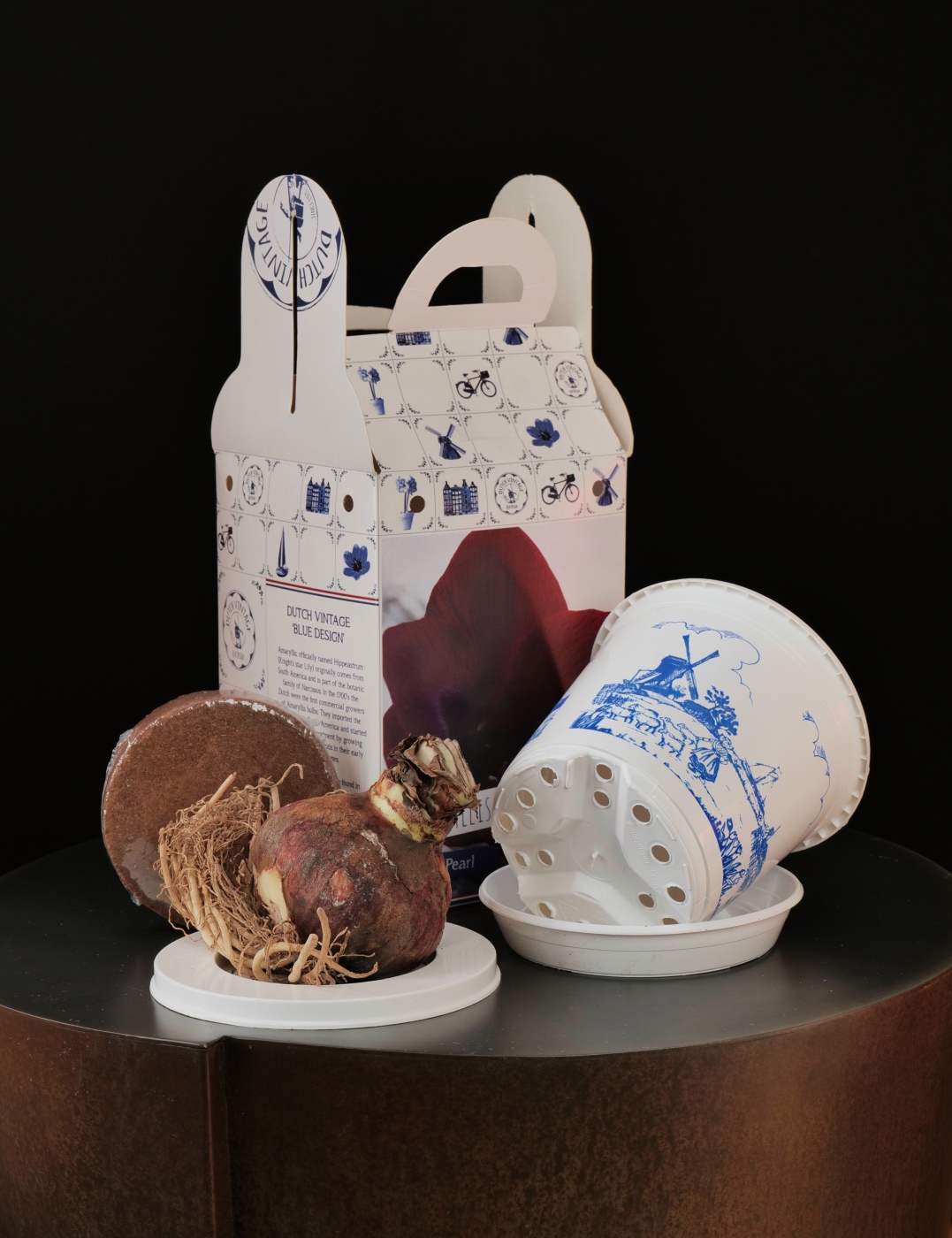
Opening the box reveals everything one could want in an amaryllis box kit, most importantly, a nice healthy bulb. This one measures just over 28 cm circumference, so the notation on the bottom of the box is fulfilled. The pot is one we’ve seen before. It has a reinforced rim, corny but nostalgic images of Dutch stereotypes in Delft blue (‘natch), and yes it has drainage holes. Many of them. Included is a snap-on saucer to keep your furniture dry and the pot steadier. The snap-on top trim piece will not be used, but speaks to the completeness of the kit. If you are offended by the look of coconut coir and don’t mind not being able to judge its moisture content, be my guest and use it. Just know the once the plant starts growing it, removal will be a chore, if not impossible.
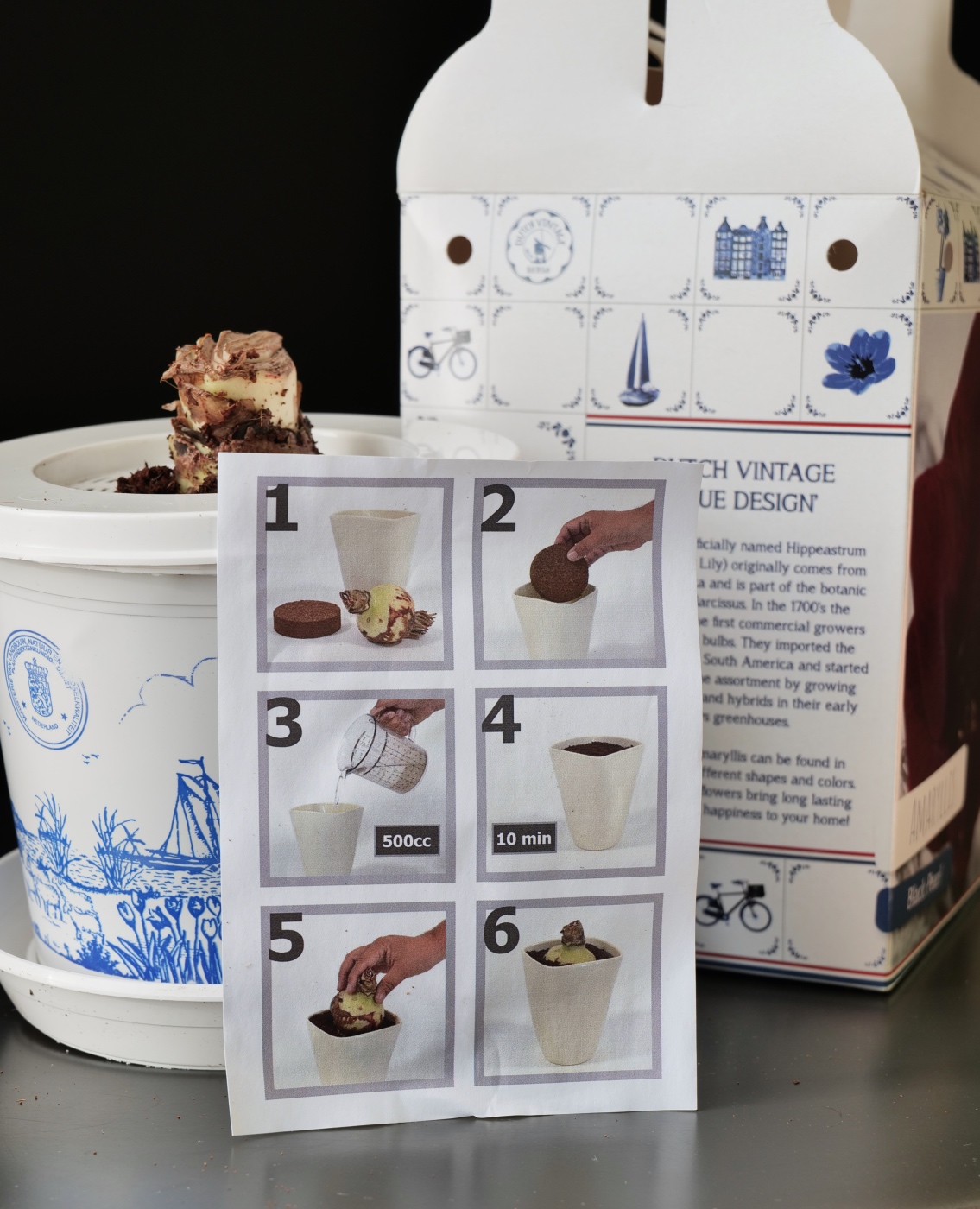
There’s usually at least one catch in the simplified instructions found on (or in) these kits. The included sheet here shows the coir soaked in a pretty little drainless cachepot; followed by planting the bulb into the same container. You and I will be soaking the coir in a container of our choosing, then planting into a much better option for success, a drained pot.
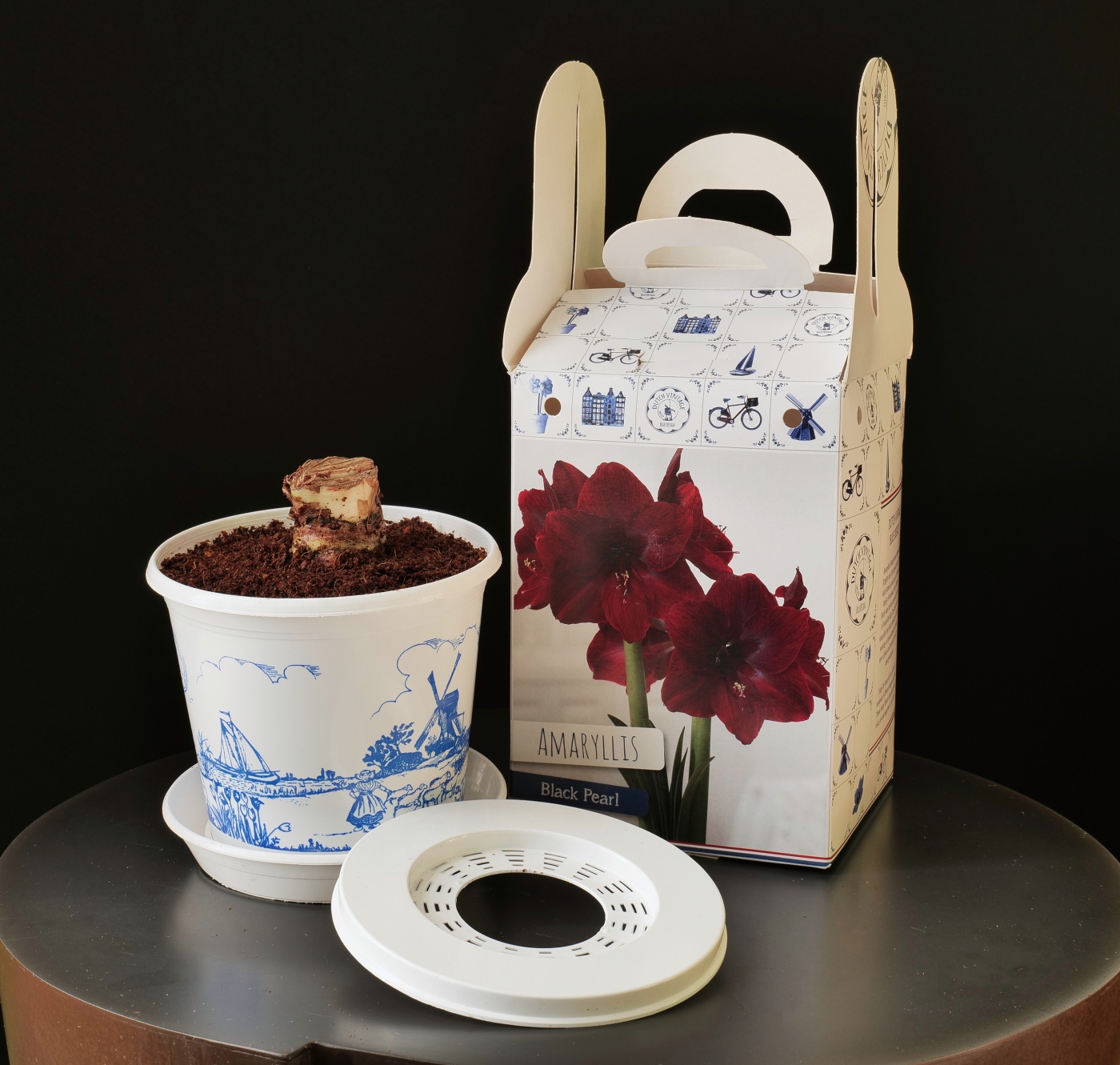
Oh, time to get back to kit #1! Seeing it budded just before Christmas did little to lift hopes in terms of my guesses on variety being correct. Of course I should always know better than to take an educate guess when my education on the state of amaryllis labeling repeatedly proves that there are no rules! Ok, now for the drum roll…
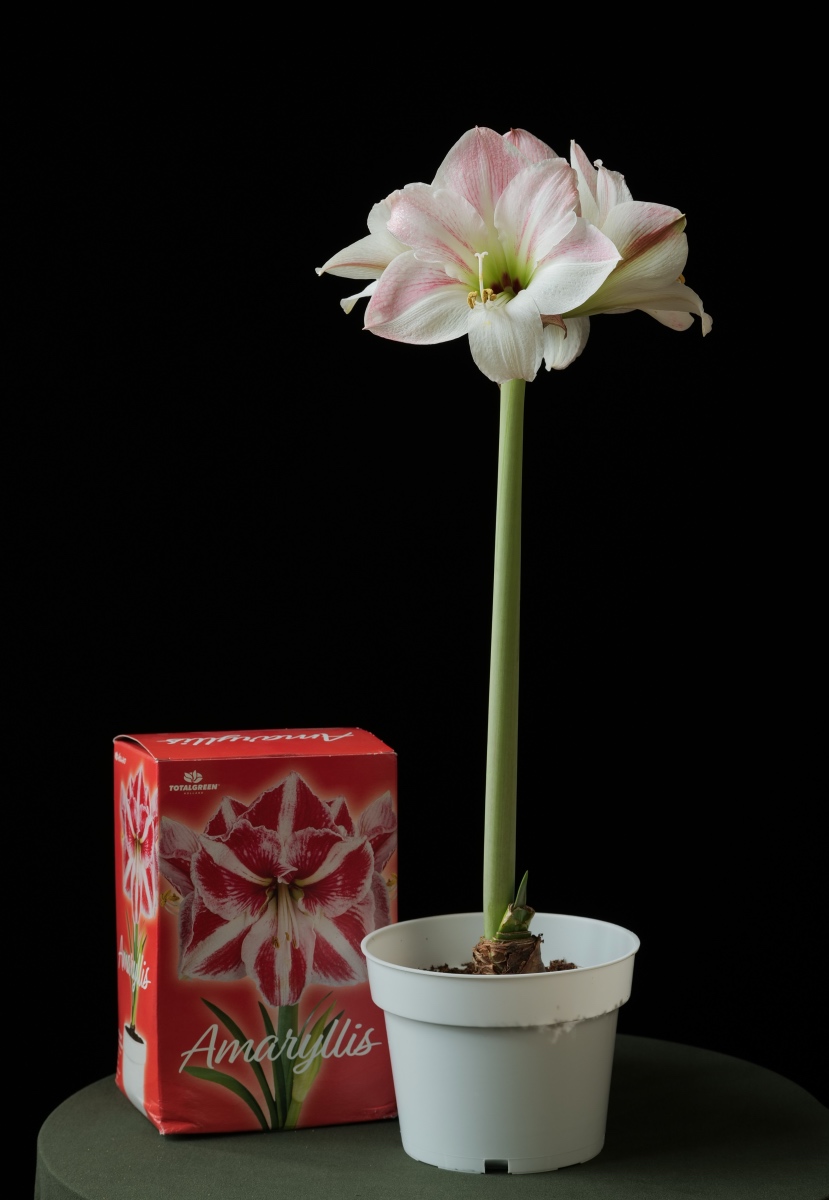
While the “Big Three” (‘Red Lion’, ‘Minerva’ and ‘Apple Blossom’) are all grown in Israel and just about anywhere else amaryllis bulbs are produced, the use of the latter is unexpected to say the least. Performance isn’t terrible by any means, we have four nice flowers in the midst of the winter holidays. ‘Apple Blossom’ at its best is always a welcome sight. Unfortunately, it is not always at its best forced from such small bulbs. In this case the bloom size is smaller than normal. The lack of an emerging second scape doesn’t bode well for a follow up. Will the other kit give us a show that is more twice as nice as this one? Let’s see.
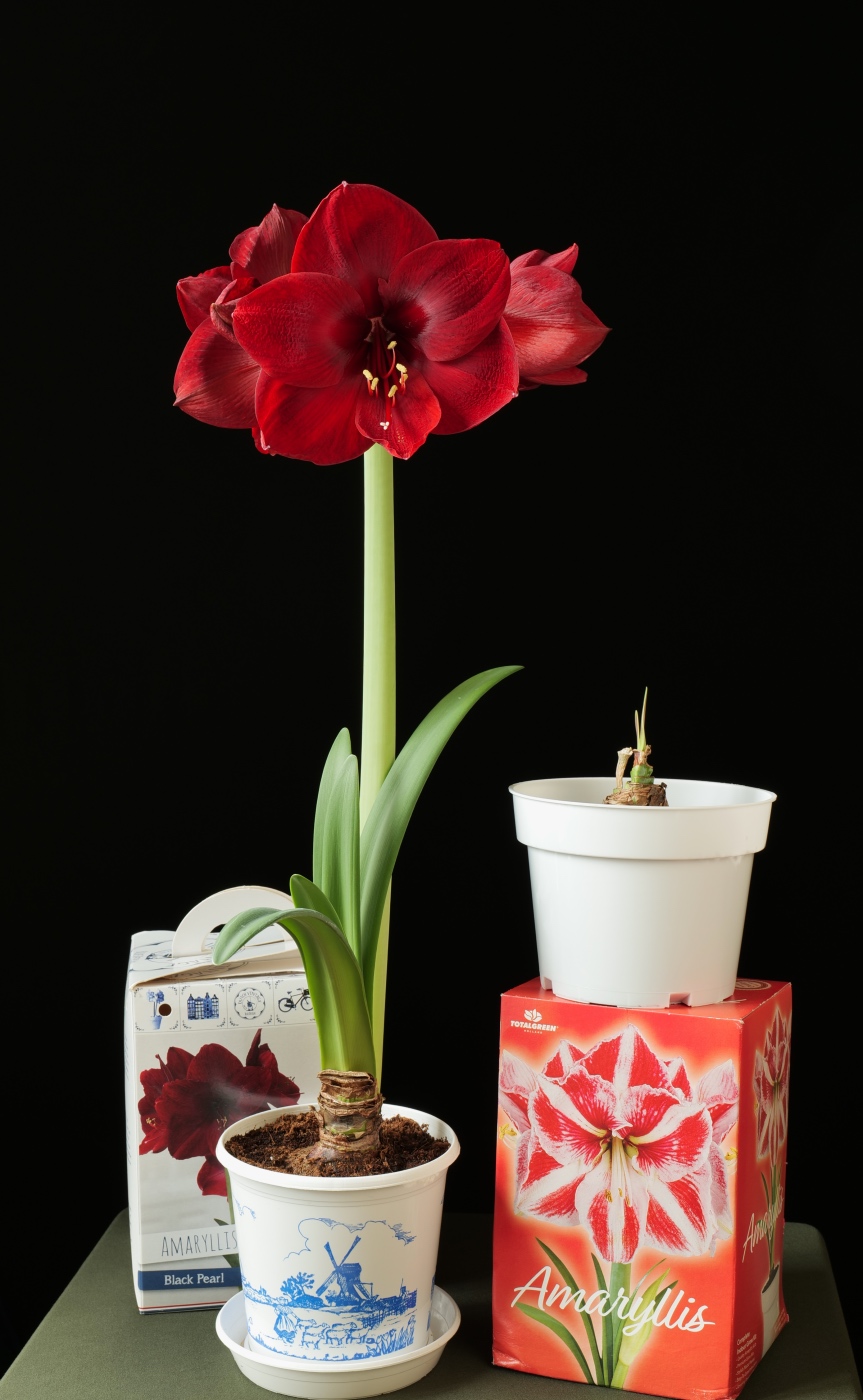
It may have taken until early February, but our ‘Black Pearl’ kit is putting on a lovely show. Some artful foliage to enhance the sturdy scape of deep red flowers is a sight to behold. The small pot to big flower ratio is always a source of amazement. Oh, and Emaryllis, are you trying to side-step the burning question? Well, yes. While we knew there wasn’t a ‘Black Pearl’ to begin with, the “educated” guess for this one would have been the well proportioned ‘Mandela’, or perhaps the similar in name (and spectacular) ‘Red Pearl’. This is a deep red, but not the deep, dark red that appears nearly black in low-lit interiors. Its rich and sumptuous garnet color has me guessing. It may be ‘Red Reality’ which was initially offered as ‘Merlot’. Will this fine kit produce another scape, giving E more time to stall and come up with proper ID?
Well, well, we do indeed have a second scape of deep red flowers come mid-March on our “Black Pearl” kit! It has gotten enough light to keep the foliage from flopping, so no staking needed though the lightweight media and pot doing less than the plant’s balance, and that snap-on pot saucer. It gives the pot base a wider stance and better stability.
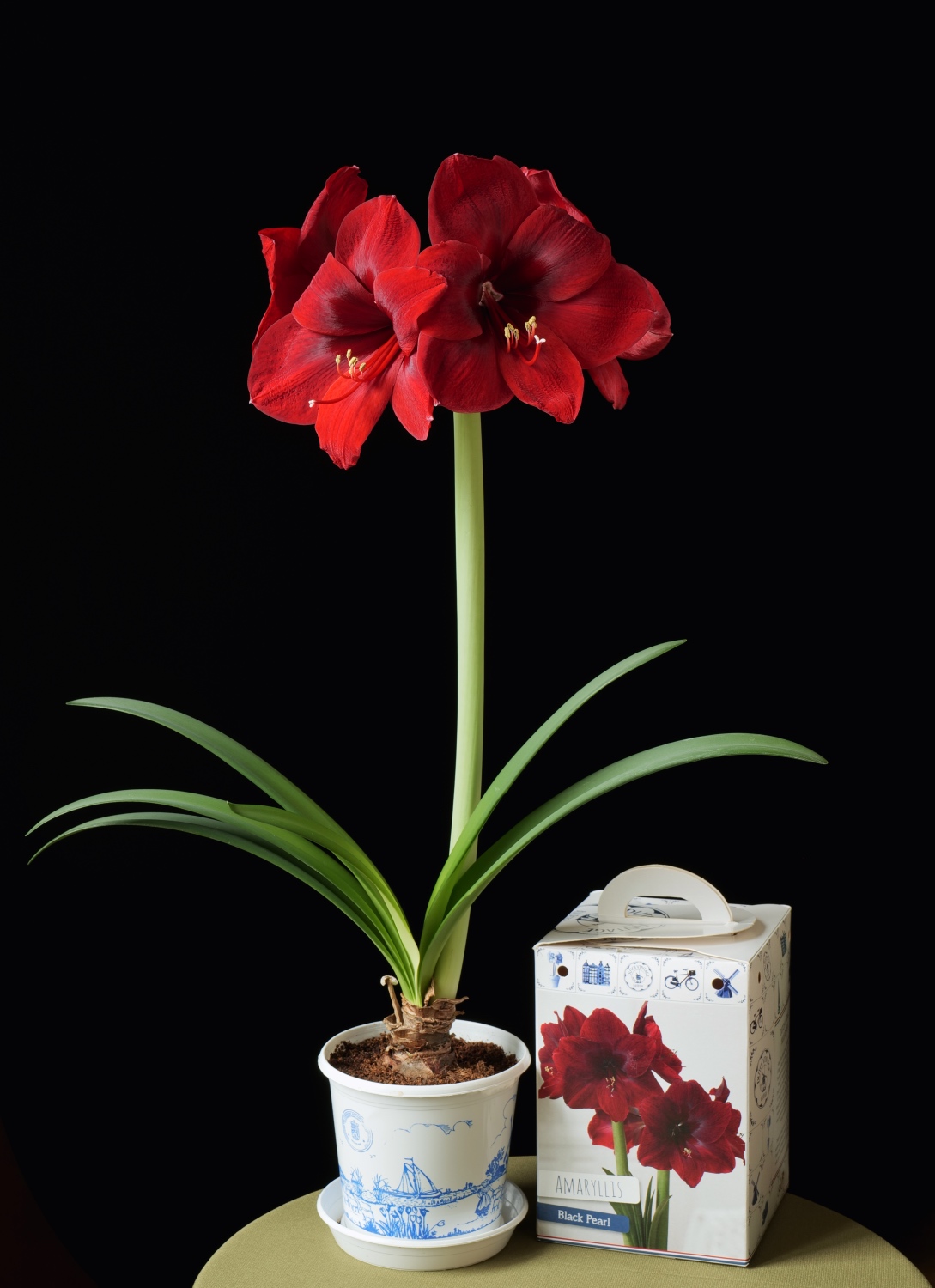
With four medium-large flowers, and some rich green foliage to make for a genuine display, it is pretty easy to guess which of our two kits gets the nod for Best of Bonanza ’22-’23. The bulb didn’t produce both scapes in unison as seen on the box image, but we did get two scopes. The photo also makes a very good match to the actual floral color; I think no one would wonder if the “Black Pearl” wasn’t true to form. Ahhh, but that brings us back the dilemma here. If “Black Pearl” isn’t a bonafide cultivar, what is this balanced beauty? Emaryllis isn’t willing to stick his neck out just yet. The flowers are not large enough to be the likes of ‘Premiere’, ‘Magnum’ and the like. The floral diameter is similar to ‘Mandela’, but this just isn’t dark enough. Betting that ‘Red Reality’ is a distinct possibility, a bulb was recently purchased that should bloom in a few weeks. Until then, I can’t honestly offer and identification. The quality of the flowers suggests it isn’t just some nameless seeding.
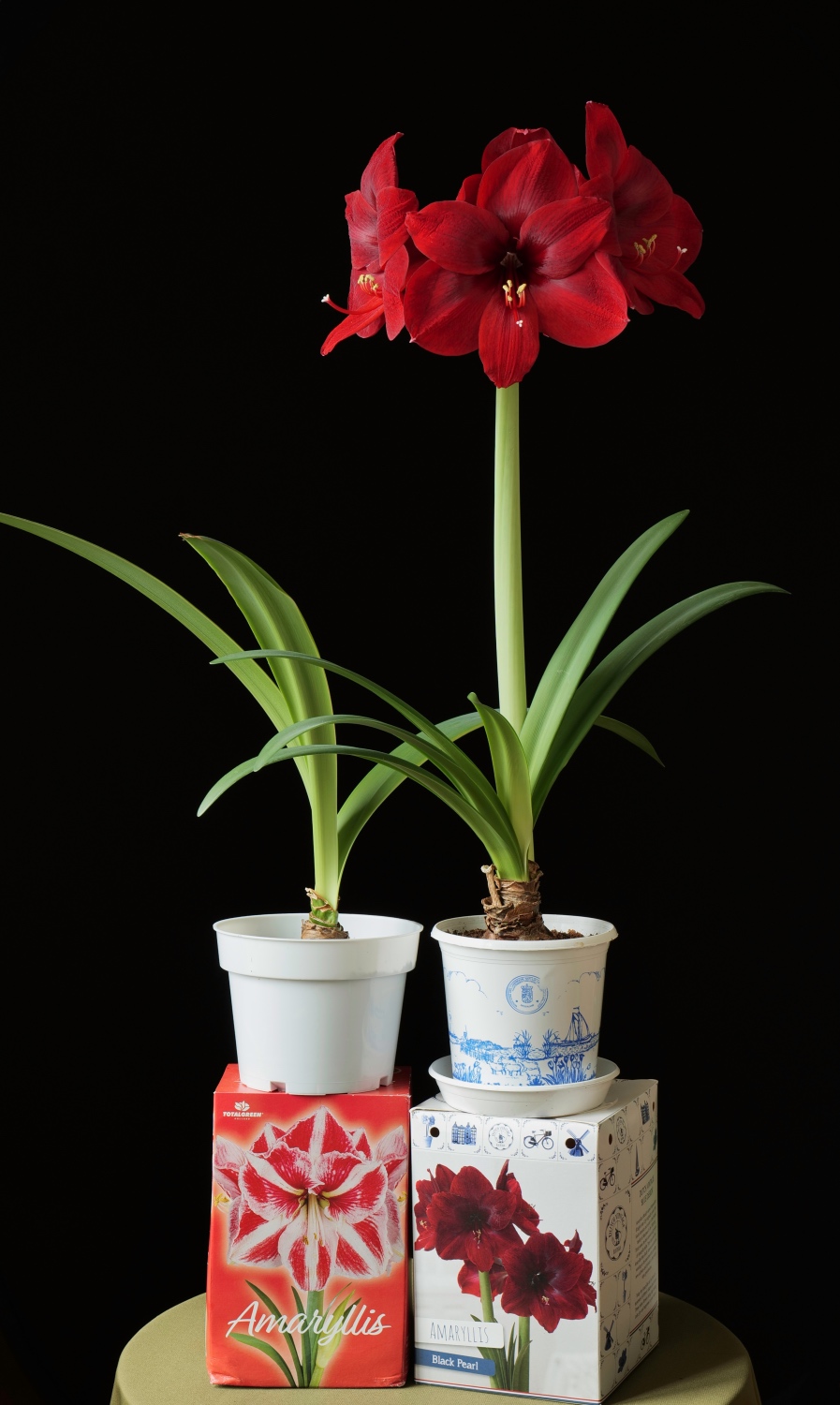
Though the ‘Black Pearl” kit was more than double the price of the other, it produced a truly beautiful, and lengthy show. Imagine you had received this as a gift; surely you would be texting or calling the gift-giver to remark on the beauty of this gift, and in doing so strengthening a relationship. The inexpensive kit wasn’t a good match at all to the box photo, and one scape of undersized ‘Apple Blossom’ flowers was only marginally worth the wait.
With that, congratulations “Black Pearl” (or whatever you are)! An update will follow whether we can declare a fairly certain ID or not. Sometimes its not so bad to just enjoy the beauty even without the name 🙂
UPDATE May, 2023! Blooming a healthy bulb of ‘Red Reality’ seems to confirm that our “Black Pearl” is indeed that cultivar, and a lovely choice for use in a premium kit!

I love your unnamed amaryllis. So beautiful.
I’m not remotely surprised by AppleBlossom standing in for a red and white striped one. I’ve had Apple Blossom in place of a supposed pure white and a red and white striped version so far this year – waiting to find out what my mystery ‘red’ bulb I found in a charity (thrift) shop in January this year will be – although it’s nearly opening and the bud is awfully pale to be hiding a dark red flower!